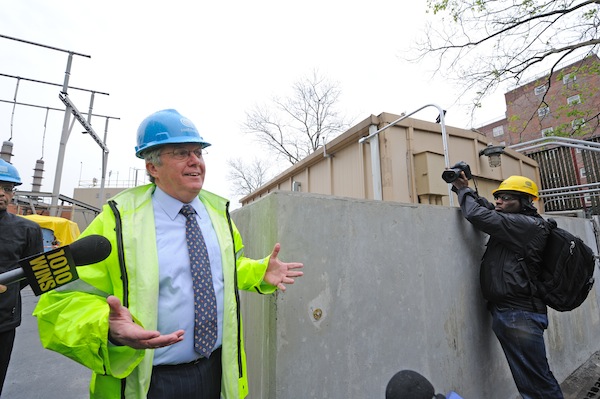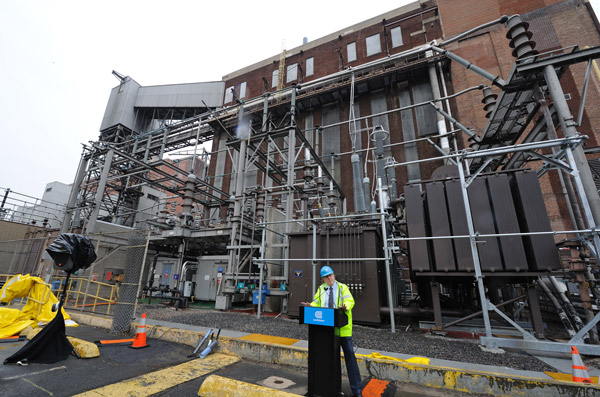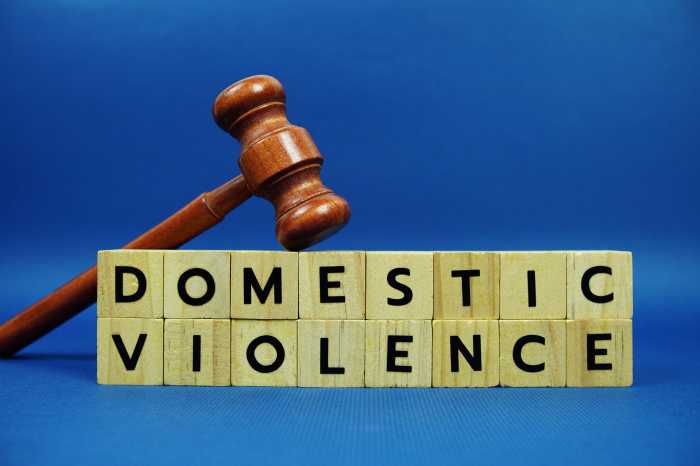
BY TERESE LOEB KREUZER | It was raining on May 28 as Kevin Burke, Con Edison’s chairperson and C.E.O. stood in front of an array of high voltage electrical coils and transformers at Con Ed’s East 13th St. substation to explain what the company has been doing and plans to do to prepare for the next big storm.
This substation was the one that plunged most of Lower Manhattan into days of darkness when Superstorm Sandy came ashore Oct. 29. Water rushed in from all directions, wrecking signal switches that are the substation’s nerve center. Now, said Burke, those switches are sheltered behind a concrete wall around five feet high — a foot and a half taller than Sandy’s unprecedented surge.
He said that Con Edison has installed over a mile of concrete walls in the last few months in 10 locations. In addition, at the substation, the company has raised switching equipment off the ground and is injecting foam into the conduits containing electrical circuits in order to create watertight seals.
Burke said that the company has spent $400 million to date and plans to spend $1 billion over the next four years in New York City and Westchester County to make its systems less likely to suffer damage and to enable it to restore power sooner if damage should occur.
In Lower Manhattan, Con Ed is investing $80 million for added protection.
Superstorm Sandy caused more than one million power outages, affecting about one-third of Con Edison’s customers.
“There is a lot more work to do,” Burke said. “But the hurricane season starts June 1st and we knew we had to have some measures in place going into the next hurricane season.”
In some parts of the Con Ed system, switches have already been installed in electrical cables in the streets, allowing the company to turn off the part of the network most likely to be flooded while leaving the rest of it operational. Elsewhere, where there are overhead wires, Con Edison has installed stronger poles and wiring and has placed “smart switches” on the lines so that sections can be turned off without disrupting service for an entire neighborhood.
The company has applied to the Public Service Commission for authorization to spend the $1 billion that Burke says it will cost for these improvements. He said that Con Edison was still hoping to get some money from the federal government to pay for these upgrades, but “at this point in time, it doesn’t look like we’ll be getting any reimbursement.”
The company has also applied to the Public Service Commission for a rate increase to compensate for the investment in storm protection.
Burke said that it would be about 3 percent for a typical New York City customer, or about $3 a month. He also said “the regulators, the city, the state and the government in Westchester are telling us that it’s very important to get customers back in service as rapidly as possible and they’re looking for us to make those investments.”
Con Ed’s rate increase request comes less than a month after the utility awarded $600,000 in bonuses to some of its top executives for their “exemplary” performance in handling the Sandy crisis and other outsized problems, including a month-long lock-out of 8,000 workers. Gov. Andrew Cuomo responded by sending a letter to Burke saying that he would order utility regulators to investigate the bonuses to make sure that they weren’t paid for with rate increases. Burke, who had received a $315,000 bonus, then decided to give it back as did the other senior executives.
At a news conference Tuesday, Burke said that the improvements to Con Edison’s systems would reduce the likelihood of loss of service, “but we still have a long way to go in terms of the investment we think is appropriate. That will be over a four-year period. In terms of global warming, we’re going to see a rise in water level – I think we’ll be responding to global warming and its impacts for many years to come.”

Kevin Burke, Con Edison’s C.E.O., on Tuesday, visited the East 13th Street substation, which was flooded during Hurricane Sandy.







































